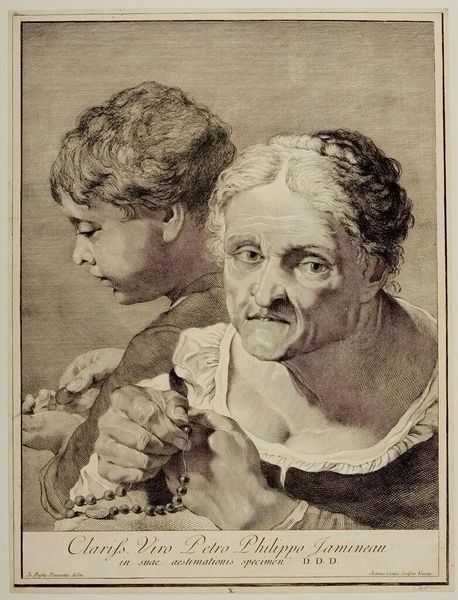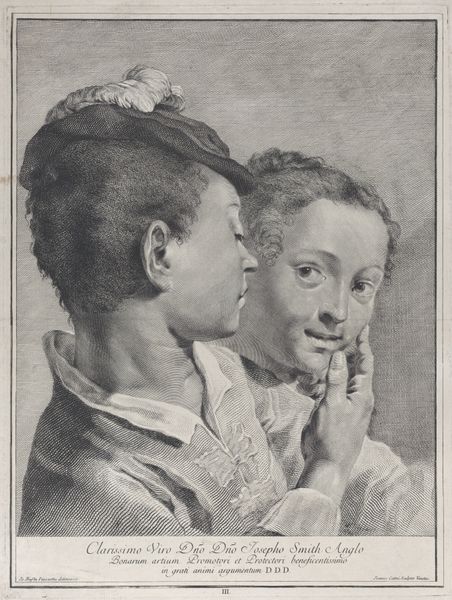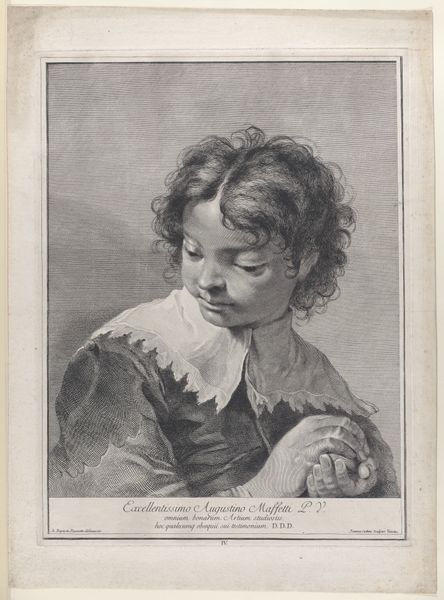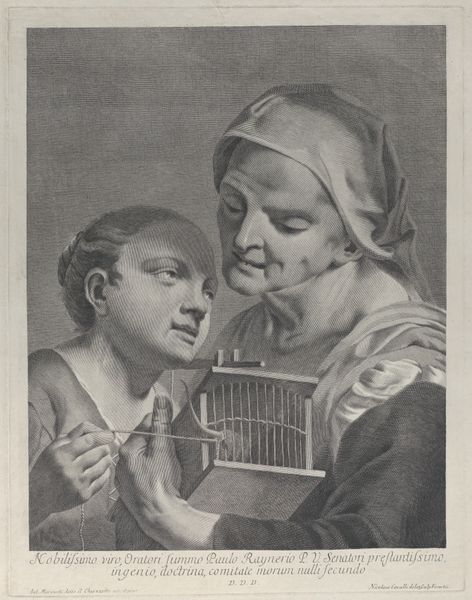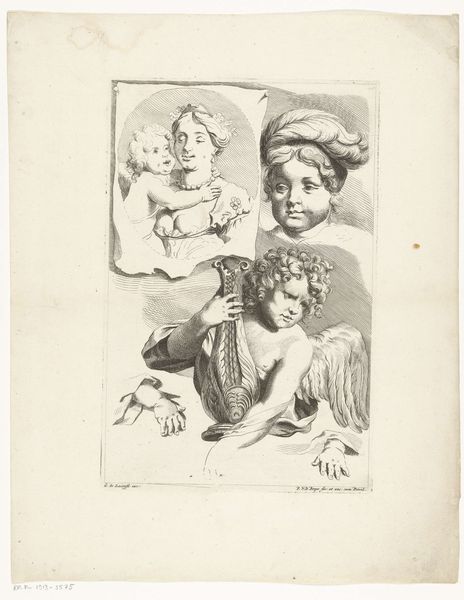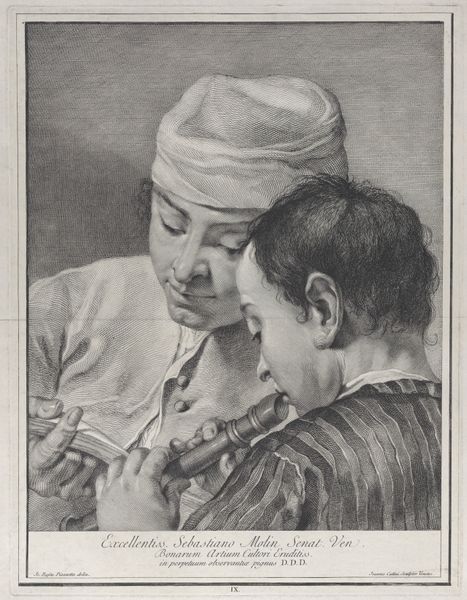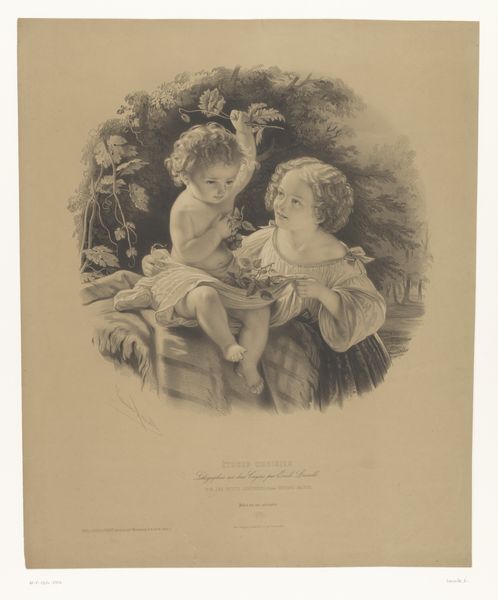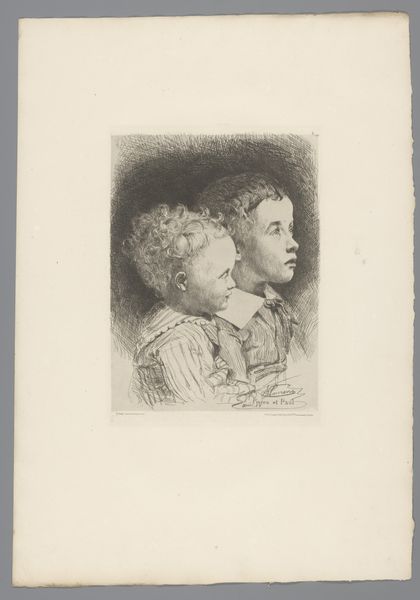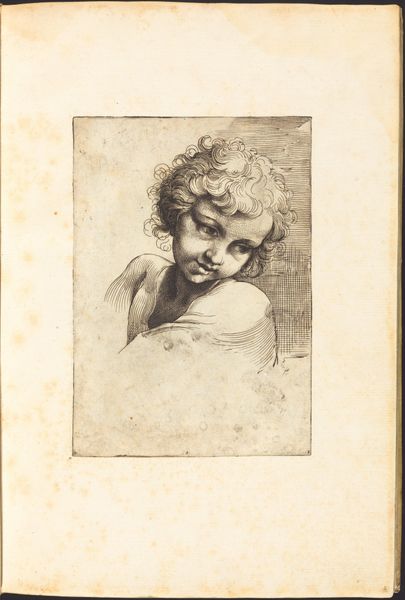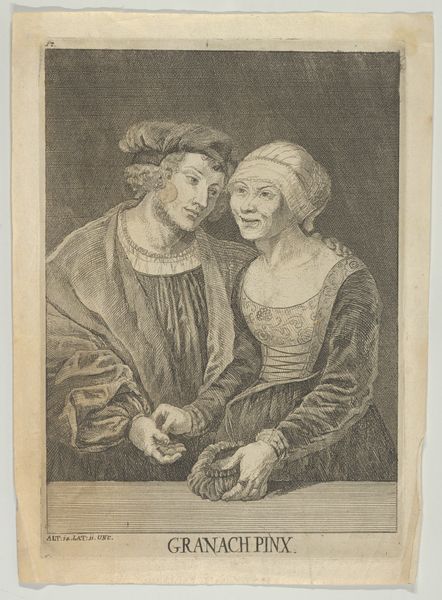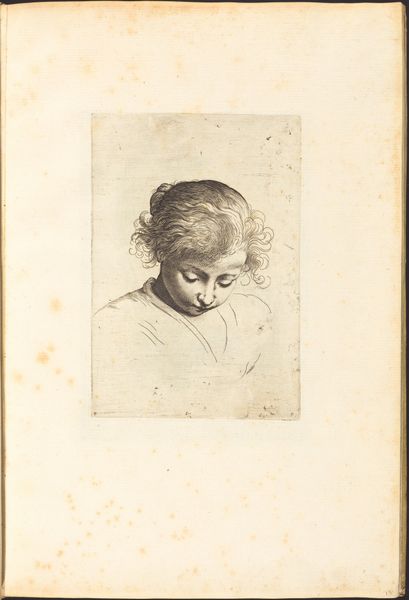
Plate 10: Old woman with a rosary and a boy counting coins; from 'Icones ad vivum expressae' after Giovanni Battista Piazzetta 1743
0:00
0:00
drawing, print, etching, engraving
#
portrait
#
drawing
#
narrative-art
#
baroque
# print
#
etching
#
boy
#
figuration
#
form
#
portrait reference
#
men
#
line
#
portrait drawing
#
genre-painting
#
engraving
#
portrait art
Dimensions: Sheet: 19 7/16 × 15 3/16 in. (49.4 × 38.6 cm) Plate: 17 15/16 × 13 11/16 in. (45.5 × 34.7 cm)
Copyright: Public Domain
Curator: This etching from 1743, now housed at the Metropolitan Museum of Art, is titled "Plate 10: Old woman with a rosary and a boy counting coins" and is derived from the work of Giovanni Battista Piazzetta. Editor: The first impression I get is quite somber. The stark contrasts of light and shadow really emphasize the weariness in the old woman's face. It feels heavy, burdened. Curator: Absolutely, the contrast is masterfully deployed to guide the viewer's eye and to accentuate the textures - from the crinkles around the woman’s eyes to the smooth surface of the coins. It's an excellent study in the interplay of line and form within a restricted monochromatic palette. Editor: But it also highlights something deeper: the disparity between generations, their roles, and economic realities. The boy, engaged with coins, while the woman with rosary beads – their parallel existence bound by societal expectations. Are they impoverished, reliant on the boy’s earnings while seeking solace through prayer? Curator: You are drawing attention to a narrative interpretation. Consider the formal composition; the way their faces are positioned within the frame—the positioning implies a shared space yet they exist independent from each other. It allows us to read their states of being as one of formal tension. Editor: But what fuels this tension? Class. Age. Religion. Consider the historical implications of piety in that period and its potential juxtaposition against mercantile culture embodied by the boy’s counting—themes Cattini draws from Piazzetta's vision, presenting to the viewer, subtle critique against an early capitalist ethos where children perform labor under watchful religious figures? Curator: A plausible interpretation. Yet observe Cattini’s technique: notice the varied application of line weights creating texture that conveys dimension upon an otherwise flat picture plane? This in and of itself adds formal weight and value—irrespective of historical narrative—as the technical virtuosity establishes aesthetic worth to the print. Editor: True. The artist has great facility to realize different states of being onto the printed page; but to simply celebrate technical merit would deny the subjectivities represented; ultimately overlooking an entire sociohistorical complexity— the boy and the woman’s place during that time. Curator: Perhaps we've reached an understanding of both; by appreciating Cattini's technical proficiency and its engagement with its representational meaning of societal class and the quiet anxieties. Editor: Agreed. The power of this work clearly lies in that intersection of artistic technique and nuanced understanding of a community—then and possibly, also, now.
Comments
No comments
Be the first to comment and join the conversation on the ultimate creative platform.
